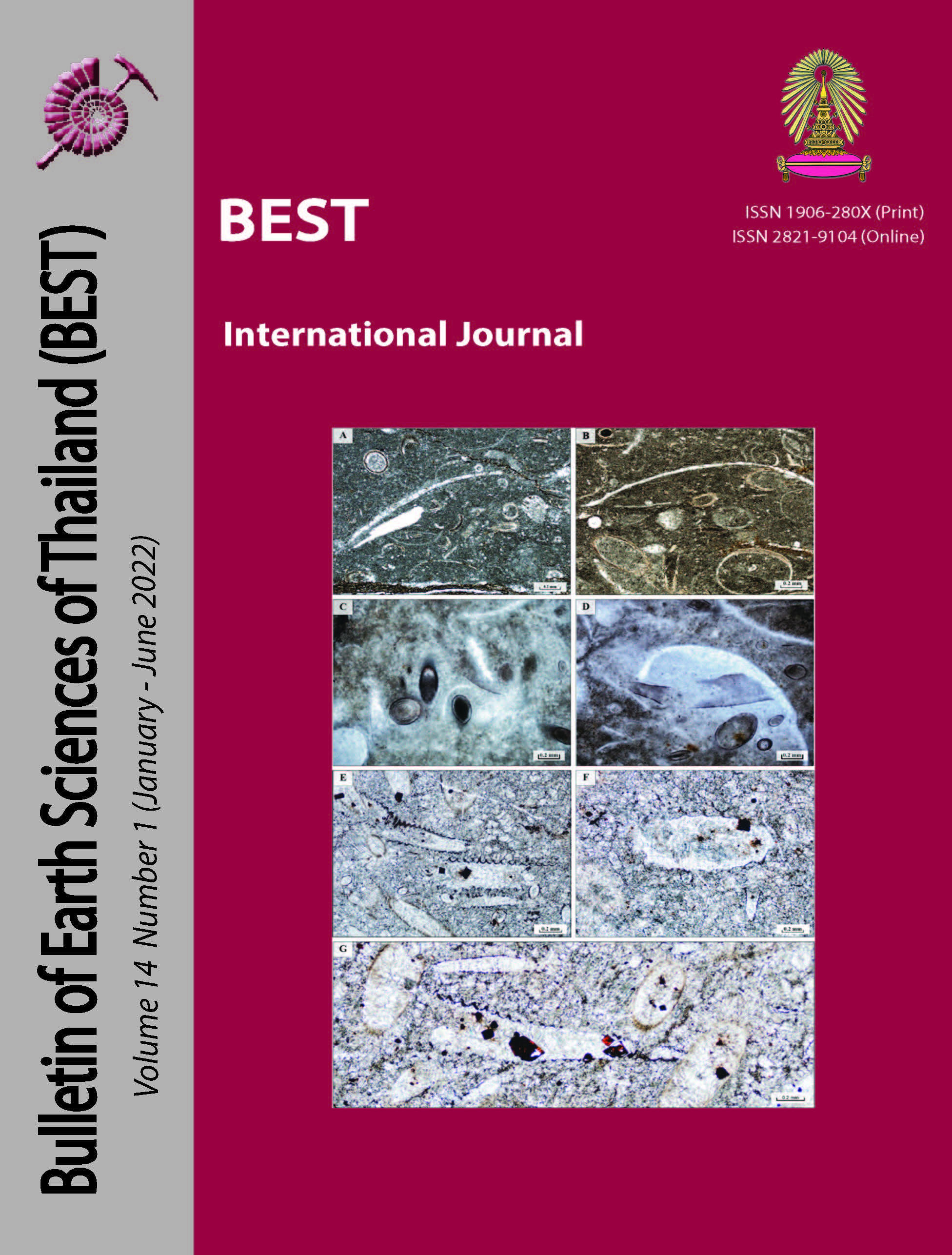Susceptibility Investigation of Debris Flow Hazard Using Topographic Index in the Nakhon Si Thammarat, Southern Thailand
Main Article Content
Abstract
Nakhon Si Thammarat (NST) is one of the cities in Southern Thailand that is vulnerable to geohazards, such as debris flows, landslides, and flooding, all of which have the potential to cause significant damage to people and property. Several topographic factors could be potential sources of debris flow, including i) a high angle slope of the mountain and ii) a number of mountain-front outlets. Thus, in this study, we used the Frequency Ratio (FR) method to identify and develop the map of debris flow susceptibility area in NST. The topographic indices associated with debris flow activity are analyzed using terrain data obtained from a Digital Elevation Model (DEM) with a resolution of 12.5 meters. The FR was calculated using a combination of ten parameters representing debris flow vulnerable areas, which included: i) slope, ii) aspect, iii) solar radiation, iv) profile curvature, v) plan curvature, vi) topographic wetness index, vii) stream power index, viii) Melton ruggedness number ix) terrain ruggedness index, and x) topographic position index. According to the results, the debris flow susceptibility of NST can be divided into five levels, with high and very high classes found at the Khao Luang Mountain around the center of NST. The eastern and western NST areas were identified as medium and low classes.
Article Details

This work is licensed under a Creative Commons Attribution-NonCommercial-NoDerivatives 4.0 International License.
Copyright © 2008 Department of Geology, Faculty of Science, Chulalongkorn University. Parts of an article can be photocopied or reproduced without prior written permission from the author(s), but due acknowledgments should be stated or cited accordingly.
References
Angillieri, M. Y. E. (2020). Debris flow susceptibility mapping using frequency ratio and seed cells, in a portion of a mountain international route, Dry Central Andes of Argentina. CATENA, 189, 104504.
Chen, Y.R., Yeh, C.H., Yu, B., 2011. Integrated application of the analytic hierarchy process and the geographic information system for flood risk assessment and flood plain management in Taiwan. Nat. Hazards 59, 1261-1276.
Das, S., Raja, D.R., 2015. Susceptibility analysis of landslide in Chittagong City Corporation Area. Bangladesh. Int. J. Environ. 4, 157-181.
Department of Mineral Resources. [online]. March 30, 2012. Accessed from :http://www.dmr.go.th (Research date : 30 August 2020).
García-Rivero, A. E., Olivera, J., Salinas, E., Yuli, R. A., and Bulege, W. (2017). Use of hydrogeomorphic indexes in SAGA-GIS for the characterization of flooded areas in Madre de Dios, Peru. International Journal of Applied Engineering Research, 12(19), 9078-9086.
Lee, S., Choi, J., Min, K., 2004a. Probabilistic landslide hazard mapping using GIS and remote sensing data at Boun, Korea. Int. J. Remote Sens. 25, 2037-2052.
Lee, Saro, Choi, J., Woo, I., 2004b. The effect of spatial resolution on the accuracy of landslide susceptibility mapping: A case study in Boun. Korea. Geosci. J. 8, 51-60.
Li, L., Lan, H., Guo, C., Zhang, Y., Li, Q., Wu, Y., 2017. A modified frequency ratio method for landslide susceptibility assessment. Landslides 14, 727-741.
Marchi, L., Dalla Fontana, G., 2005. GIS morphometric indicators for the analysis of sediment dynamics in mountain basins. Environ. Geol. 48, 218-228.
Meinhardt, M., Fink, M., and Tünschel, H. 2015. Landslide susceptibility analysis in central Vietnam based on an incomplete landslide inventory: Comparison of a new method to calculate weighting factors by means of bivariate statistics. Geomorphology 234: 80-97.
Pailoplee, S. (2019) 6 Disaster patterns of mass migration and the understanding of landslides. [online]. accessible from: http://www. mitrearth. org/7-3-mass-wasting/. (Research date: 18 September 2020)


